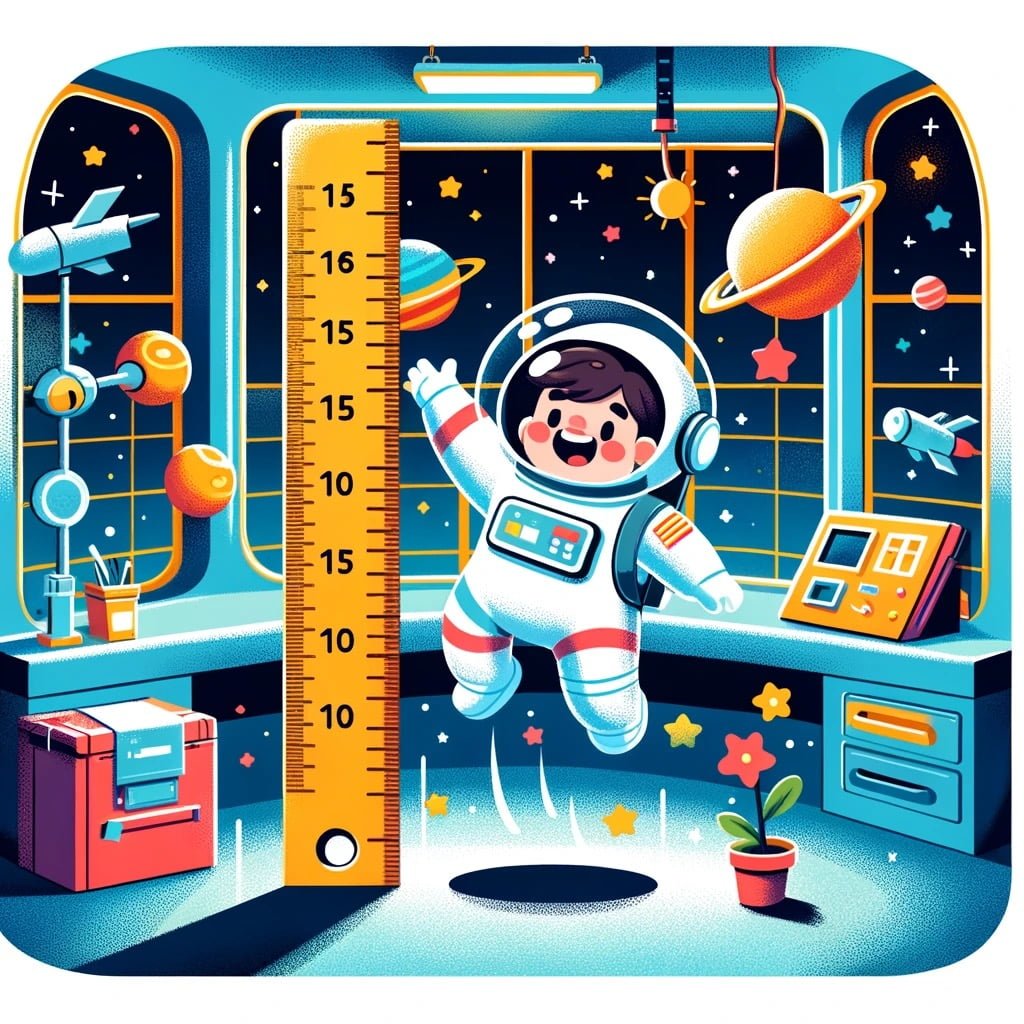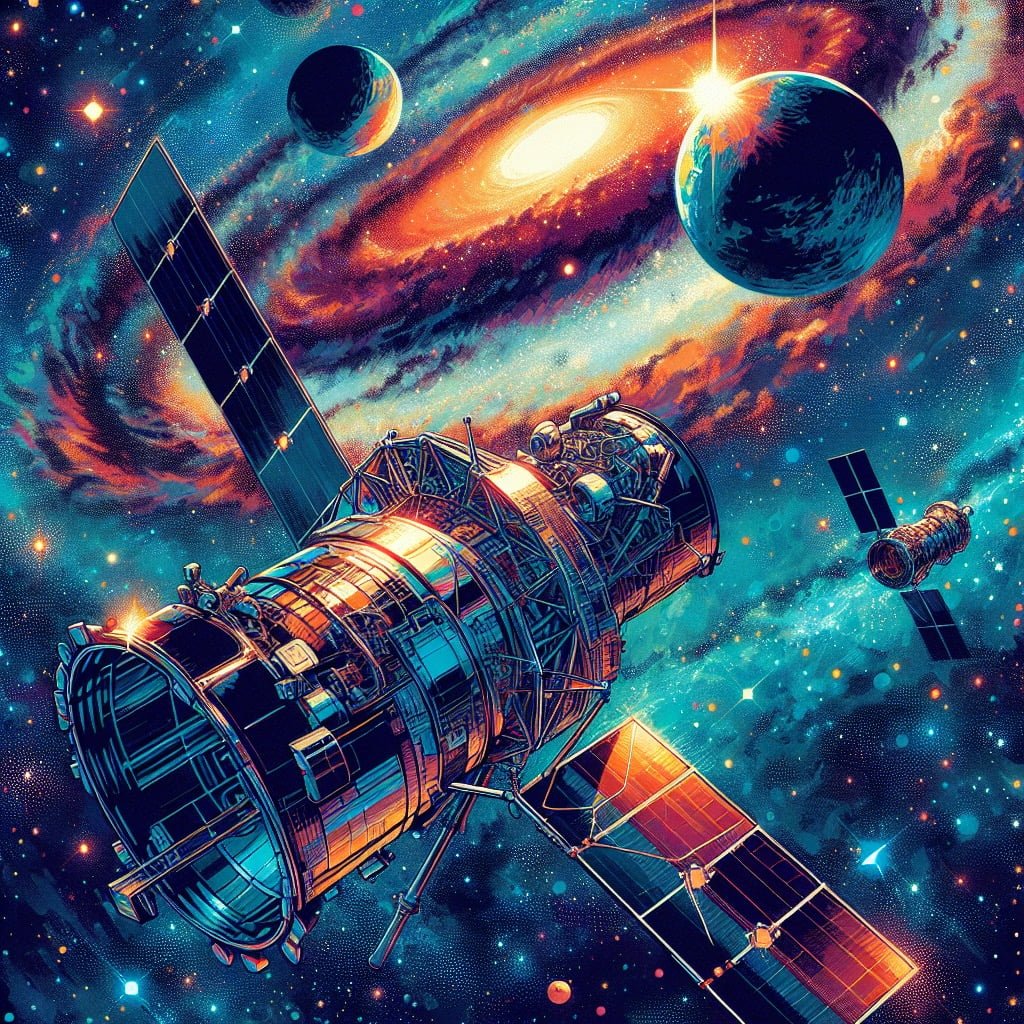Welcome to a fascinating journey through the world of **Fun Facts for Kids About Spaceships and Astronauts**! Prepare to be amazed as we explore the incredible milestones, challenges, and wonders of space exploration that have captivated audiences of all ages. From the historic first spaceship flight in 1961 to the thrilling experience of microgravity in space, each fact will ignite your curiosity and spark a passion for the vast universe beyond our Earth. Get ready to embark on an unforgettable adventure through the cosmos, where astronauts defy gravity, spacecraft soar at mind-boggling speeds, and the mysteries of outer space await to be uncovered. Join us as we delve into the exciting world of space exploration and inspire a sense of wonder in the young explorers of tomorrow. Let’s blast off into the captivating realm of fun facts about spaceships and astronauts! 🚀🌌
Fun Facts for Kids About Spaceships and Astronauts
1. The First Spaceship Flew in 1961

For younger kids: The first spaceship flew a long time ago and helped people go to space!
For older kids: The Vostok 1, manned by Yuri Gagarin, was the first spaceship to carry a human into space on April 12, 1961, marking a major milestone in space exploration.
Detailed explanation:The first spaceship to fly was Vostok 1, launched by the Soviet Union in 1961. This historic event marked the beginning of human space exploration and opened up a whole new world of possibilities beyond Earth’s atmosphere. Fun Facts for Kids About Spaceships and Astronauts can be a fascinating topic to explore, as it introduces young minds to the wonders of outer space and the incredible feats of human ingenuity that have allowed us to travel beyond our planet.
The Vostok 1 mission was piloted by Yuri Gagarin, a Soviet cosmonaut who became the first human to journey into space. Gagarin’s courageous flight lasted just 108 minutes, during which he orbited the Earth before safely returning to the surface. This milestone achievement paved the way for future space missions and inspired generations of aspiring astronauts to reach for the stars.
Spaceships are marvels of engineering, designed to withstand the harsh conditions of space travel and protect their passengers from the vacuum of space. These spacecraft are equipped with advanced technology and systems that allow astronauts to live and work in space for extended periods of time. From the iconic Apollo missions to the modern-day spacecraft like SpaceX’s Crew Dragon, there have been numerous advancements in space technology that continue to push the boundaries of human exploration.
Learning about spaceships and astronauts can ignite a sense of wonder and curiosity in kids, inspiring them to pursue careers in science, technology, engineering, and mathematics. By delving into the history and science of space travel, young minds can develop a deeper appreciation for the immense challenges and rewards of venturing into the cosmos. So, whether it’s exploring the history of space exploration or imagining the possibilities of future missions to Mars, there are endless Fun Facts for Kids About Spaceships and Astronauts waiting to be discovered.
Fun Facts for Kids About Spaceships and Astronauts
2. Astronauts Can Grow Taller in Space

For younger kids: Astronauts can become taller when they go to space!
For older kids: In the microgravity environment of space, the absence of pressure on the spine can cause astronauts to elongate up to 2 inches, although they return to their normal height when back on Earth.
Detailed explanation:Fun Facts for Kids About Spaceships and Astronauts include the fascinating phenomenon of astronauts actually growing taller in space. This may seem counterintuitive, as we are used to the idea of gravity compressing our spines and making us shorter over time on Earth. However, the absence of gravity in space allows the discs in our spines to expand and relax, causing astronauts to temporarily gain height.
In the microgravity environment of space, the spinal discs have the opportunity to decompress and return to their natural size. This leads to astronauts experiencing a slight increase in height, typically around 2-5 centimeters. This temporary growth spurt can be measured during their time on the International Space Station or other spacecraft.
Although this increase in height is exciting, it is important to note that it is only temporary. Once astronauts return to Earth and the effects of gravity are reintroduced, their spines will once again compress, and they will return to their original height. This phenomenon serves as a reminder of the incredible adaptability of the human body in different environments, such as the unique challenges of space travel.
In conclusion, the fact that astronauts can grow taller in space is just one of the many intriguing Fun Facts for Kids About Spaceships and Astronauts. It highlights the amazing ways in which the human body responds to the conditions of space, providing valuable insights for scientists and space explorers alike.
Fun Facts for Kids About Spaceships and Astronauts
3. Spacecraft Fly at Over 17,000 Miles per Hour

For younger kids: Spaceships zoom around really, really fast in space!
For older kids: Spacecraft travel at incredibly high speeds, typically exceeding 17,000 miles per hour (27,000 km/h) to break free from Earth’s gravity and reach outer space.
Detailed explanation:Spacecraft are engineering marvels that travel through the vast expanse of outer space at incredible speeds. One of the most astonishing facts about these spacecraft is that they fly at over 17,000 miles per hour. This mind-boggling speed is necessary for spacecraft to overcome the immense gravitational pull of celestial bodies like Earth and reach their destinations in a reasonable amount of time.
To put this speed into perspective, consider that the average commercial airplane flies at around 500-600 miles per hour. In comparison, spacecraft travel at speeds more than 28 times faster! This enables them to cover vast distances and explore distant planets, moons, and asteroids in our solar system and beyond.
Fun Facts for Kids About Spaceships and Astronauts remind us of the incredible feats of engineering and ingenuity that make space travel possible. To achieve such high speeds, spacecraft are equipped with powerful rocket engines that generate enormous thrust. They also rely on precise navigation systems to ensure they stay on course during their journeys through the cosmos.
Furthermore, the high speeds at which spacecraft travel pose unique challenges for astronauts on board. They experience intense acceleration during launch and must adapt to microgravity conditions while in orbit. The incredible speed of spacecraft is a testament to human curiosity and determination to explore the mysteries of the universe. Next time you look up at the night sky, remember that there are spacecraft zooming past at over 17,000 miles per hour, pushing the boundaries of what is possible in space exploration.
Fun Facts for Kids About Spaceships and Astronauts
4. The Space Shuttle Orbiter Weighed Over 165,000 Pounds

For younger kids: The space shuttle orbiter was super heavy, like many elephants together!
For older kids: The space shuttle orbiter, used to carry astronauts and cargo into space, weighed over 165,000 pounds (74,800 kg) and was as heavy as about 18 adult African elephants.
Detailed explanation:One of the most interesting FUN FACTS FOR KIDS ABOUT SPACESHIPS AND ASTRONAUTS is that the Space Shuttle Orbiter, a spacecraft used by NASA for missions to space, weighed over 165,000 pounds. This incredible weight was necessary for the orbiter to carry out its various functions in space, including transporting astronauts to and from the International Space Station, launching and repairing satellites, and conducting scientific research.
The Space Shuttle Orbiter was a complex and sophisticated spacecraft, measuring over 122 feet in length and capable of carrying up to seven astronauts on board. Despite its massive weight, the orbiter was designed to be reusable, meaning that it could be launched into space multiple times. This reusability was a key factor in reducing the cost of space missions and making space exploration more accessible.
In order to lift off into space, the Space Shuttle Orbiter was attached to two solid rocket boosters and an external fuel tank, which provided the necessary thrust to escape Earth’s gravity. Once in space, the orbiter would detach from these components and maneuver itself using its onboard engines and thrusters.
Overall, the Space Shuttle Orbiter was a remarkable feat of engineering and a crucial component of NASA’s space program. Its impressive weight of over 165,000 pounds is just one example of the incredible capabilities of spacecraft and the fascinating world of space exploration.
Fun Facts for Kids About Spaceships and Astronauts
5. Astronauts Train Underwater to Simulate Spacewalking

For younger kids: Astronauts practice floating in water to learn how to walk in space!
For older kids: To simulate the feeling of weightlessness in space, astronauts undergo training in giant swimming pools, where they practice complex tasks for spacewalks and maintenance aboard the International Space Station.
Detailed explanation:One of the most fascinating aspects of astronaut training is the fact that they often train underwater to simulate spacewalking. This may seem like a curious choice at first, but there are actually many reasons why this underwater training is so crucial for preparing astronauts for the challenges of outer space.
First and foremost, training underwater allows astronauts to experience the sensation of weightlessness, which is a key aspect of life in space. In the microgravity environment of space, astronauts must learn how to move and operate without the pull of gravity on their bodies. By training underwater, astronauts can simulate this weightless environment and practice using their equipment and tools in a similar way to how they would in space.
Additionally, underwater training also helps astronauts develop their teamwork and communication skills. Just like in space, working on complex tasks underwater requires clear communication and coordination between team members. By practicing these skills in the underwater environment, astronauts can better prepare for the challenges of working together in the confined and high-pressure environment of a spacewalk.
Overall, underwater training is a vital part of astronaut preparation for space missions. It provides a unique and effective way for astronauts to simulate the conditions of spacewalking and develop the skills they will need to succeed in the challenging and exciting world of space exploration.
In conclusion, the use of underwater training for astronauts is a fascinating and essential part of their preparation for space missions. By experiencing weightlessness, developing teamwork and communication skills, and simulating the challenges of spacewalking, astronauts can greatly enhance their readiness for the incredible adventure of space exploration. Fun Facts for Kids About Spaceships and Astronauts.
Fun Facts for Kids About Spaceships and Astronauts
6. The Hubble Space Telescope Orbits Earth Every 97 Minutes

For younger kids: The Hubble telescope zips around the Earth really, really fast!
For older kids: Hubble orbits our planet at a breakneck speed, completing a full orbit every 97 minutes and providing breathtaking views of the universe.
Detailed explanation:Fun Facts for Kids About Spaceships and Astronauts: The Hubble Space Telescope is a remarkable piece of technology that orbits the Earth every 97 minutes, traveling at a speed of about 17,000 miles per hour. This means that the telescope completes approximately 15.5 orbits around the Earth each day, allowing it to observe a wide range of celestial objects and phenomena.
The Hubble Space Telescope was launched into orbit by the Space Shuttle Discovery in 1990, and has since provided us with countless breathtaking images of distant galaxies, stars, and planets. Its location above Earth’s atmosphere allows it to capture incredibly detailed and clear images of objects in space, free from the distortion caused by the atmosphere.
One of the key reasons why the Hubble Space Telescope orbits the Earth is to avoid the interference of Earth’s atmosphere, which can blur and distort observations made from the ground. By orbiting above the atmosphere, the telescope is able to capture images with much higher resolution and clarity than would be possible from the surface. This has allowed astronomers to make many groundbreaking discoveries and advancements in our understanding of the universe.
In addition to its scientific importance, the Hubble Space Telescope has also captured the imagination of people around the world with its stunning images of distant galaxies and nebulae. It has become a symbol of human curiosity and the quest for knowledge about the universe we inhabit. The fact that it orbits the Earth every 97 minutes serves as a reminder of the incredible technology and engineering that make such feats possible in the exploration of space.
Fun Facts for Kids About Spaceships and Astronauts
7. The Saturn V Rocket Was Taller Than the Statue of Liberty

For younger kids: The Saturn V rocket was as big as a giant skyscraper!
For older kids: The Saturn V, the rocket used for the Apollo moon missions, stood at a towering height of 363 feet, taller than the Statue of Liberty, and remains the tallest and most powerful rocket ever successfully flown.
Detailed explanation:One of the most impressive feats of engineering in human history was the Saturn V rocket, which was used by NASA during the Apollo missions to send astronauts to the moon. Standing at a towering height of 363 feet, the Saturn V rocket was actually taller than the iconic Statue of Liberty, which stands at 305 feet, including its pedestal. This fact alone showcases the immense size and power of the Saturn V rocket, and serves as a testament to the incredible advancements made in space exploration during the 1960s and 70s.
For kids who are interested in spaceships and astronauts, learning about the Saturn V rocket can be a thrilling experience. The rocket was comprised of three stages, each with its own set of powerful engines that propelled it into space. The first stage alone had five massive F-1 engines, which generated a combined thrust of 7.5 million pounds, helping the rocket break free of Earth’s gravitational pull. This kind of power is difficult to comprehend, but it is what allowed astronauts to travel to the moon and back safely.
Aside from its impressive height, the Saturn V rocket also carried astronauts and essential equipment into space, paving the way for historic missions like the Apollo 11 moon landing. The sheer size and capabilities of the rocket make it a fascinating subject for kids who are curious about outer space and the technology that allows us to explore it. Fun facts about spaceships and astronauts, such as the towering height of the Saturn V rocket, can inspire young minds to dream big and reach for the stars.
Fun Facts for Kids About Spaceships and Astronauts
8. Astronauts Experience Microgravity in Space

For younger kids: Astronauts float around like they’re in a magical flying castle!
For older kids: In space, astronauts experience microgravity, which gives them the sensation of weightlessness, allowing them to float and conduct experiments that are not possible on Earth.
Detailed explanation:One of the most fascinating aspects of space travel is the experience of microgravity that astronauts encounter while in orbit. This phenomenon, often referred to as weightlessness, occurs because objects in freefall orbit around a larger body, such as the Earth, are essentially in a state of continuous freefall. This results in the sensation of being weightless, as there is no gravitational force pulling them towards the Earth.
Astronauts aboard spacecrafts like the International Space Station (ISS) experience microgravity, which allows them to float effortlessly and move around without the constraints of gravity. This unique environment also presents some challenges for astronauts, as they must adjust to eating, sleeping, and even using the bathroom in a weightless environment. Simple tasks like drinking water or writing can be quite different in microgravity, requiring astronauts to adapt and learn new techniques.
Despite the challenges, the experience of microgravity is often described as exhilarating and awe-inspiring by astronauts. They are able to perform experiments, conduct research, and carry out tasks that would not be possible on Earth. The sensation of floating and the ability to move in three dimensions can be both thrilling and disorienting for astronauts, but it is a key aspect of life in space.
In conclusion, the experience of microgravity is a fascinating and essential aspect of space travel that provides astronauts with unique opportunities for research and exploration. Fun Facts for Kids About Spaceships and Astronauts include the exciting experience of floating in space and the challenges and rewards that come with it.
Fun Facts for Kids About Spaceships and Astronauts
9. The Apollo 11 Mission Landed the First Humans on the Moon

For younger kids: The Apollo mission took people to the moon for the first time ever!
For older kids: The Apollo 11 mission, led by Neil Armstrong and Buzz Aldrin, made history by landing the first humans on the moon on July 20, 1969, a monumental achievement in space exploration.
Detailed explanation:One of the most iconic moments in human history occurred on July 20, 1969, when the Apollo 11 mission successfully landed the first humans on the moon. This historic event was the culmination of years of planning, technological advancements, and sheer determination.
The Apollo 11 mission was led by astronauts Neil Armstrong, Buzz Aldrin, and Michael Collins. Armstrong and Aldrin were the lucky individuals chosen to actually set foot on the lunar surface, while Collins remained in orbit around the moon in the command module.
The journey to the moon was a complex and risky one, with the astronauts traveling over 240,000 miles through the vacuum of space. Fun Facts for Kids About Spaceships and Astronauts, the astronauts had to contend with challenges such as high levels of radiation, extreme temperatures, and the potential for equipment failure. Despite these risks, the crew of Apollo 11 remained focused and determined to achieve their goal.
After a successful landing on the moon’s surface, Armstrong famously declared, “That’s one small step for man, one giant leap for mankind.” This moment marked a significant milestone in human exploration and our understanding of the universe. The astronauts spent several hours conducting experiments, collecting samples, and taking photographs before returning safely to Earth.
The success of the Apollo 11 mission paved the way for future space exploration and inspired generations of scientists, engineers, and dreamers. It remains a shining example of what can be achieved through ingenuity, bravery, and teamwork. Fun Facts for Kids About Spaceships and Astronauts, the legacy of Apollo 11 continues to inspire new generations to reach for the stars and push the boundaries of what is possible in space exploration.
Fun Facts for Kids About Spaceships and Astronauts
10. Spaceships Can Reach Thousands of Degrees in Atmospheric Reentry

For younger kids: Spaceships become really, really hot when they come back to Earth!
For older kids: During atmospheric reentry, the spacecraft’s heat shield protects it from temperatures reaching thousands of degrees Fahrenheit as it plummets through the Earth’s atmosphere, creating a fiery but controlled descent.
Detailed explanation:Space exploration is an exciting and fascinating field that captivates people of all ages, especially children. Fun facts about spaceships and astronauts can ignite a sense of wonder and curiosity in young minds, inspiring them to learn more about the universe beyond our planet.
One intriguing fact about spaceships is that they can reach temperatures in the thousands of degrees during atmospheric reentry. When a spacecraft reenters Earth’s atmosphere from space, it is traveling at incredibly high speeds. The friction generated by the spacecraft moving through the air causes the air molecules to compress and heat up, leading to the intense heat experienced during reentry.
To withstand these extreme temperatures, spaceships are equipped with heat shields made of special materials that can withstand the heat and protect the spacecraft and its occupants. These heat shields are crucial for ensuring the safety of astronauts and the success of the mission.
Learning about the incredible temperatures experienced during atmospheric reentry can spark the imagination of children and prompt them to ask questions about how spaceships are designed to withstand such conditions. By sharing fun facts about spaceships and astronauts, we can inspire the next generation of scientists, engineers, and explorers to push the boundaries of what is possible in space exploration.
Did You Know?
Astronauts have to exercise for 2 hours every day in space to prevent muscle and bone loss caused by the weightlessness of the microgravity environment.
Summary of Interesting Facts for Children About Spaceships and Astronauts
Embark on an exciting journey through the world of spaceships and astronauts with our fun and educational blog post! Discover fascinating facts and intriguing tidbits that will ignite curiosity and wonder in both children and adults. By exploring the history of space travel and the amazing feats of human ingenuity, readers can gain a greater appreciation for the wonders of the cosmos.
Moreover, learning about spaceships and astronauts can inspire young minds to pursue interests in science, technology, engineering, and mathematics. By uncovering the mysteries of the universe and the complexities of space exploration, children can develop a lifelong passion for learning and discovery.
So why wait? Dive into our blog post today and join us on an unforgettable journey through the wonders of outer space! Explore fun facts about spaceships and astronauts that will spark imagination, curiosity, and a sense of awe-inspiring wonder. Don’t miss out on this exciting opportunity to expand your knowledge and cultivate a love for space exploration. Happy reading!
Sources and additional information for Fun Facts for Kids About Spaceships and Astronauts
WikipediaBritannicaNASAEuropean Space Agency (ESA)Space.comAstrophysical JournalSky & TelescopeUniverse TodaySpaceXThe Planetary SocietyAstronomy MagazineHubbleSiteNational Geographic KidsNASANational Air and Space MuseumESA KidsSpace.comThe Planetary SocietyNational Radio Astronomy Observatory (NRAO)Hayden PlanetariumSky & Telescope




